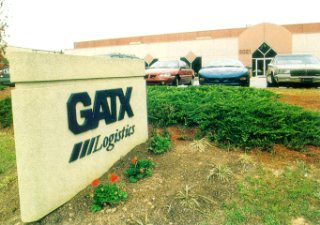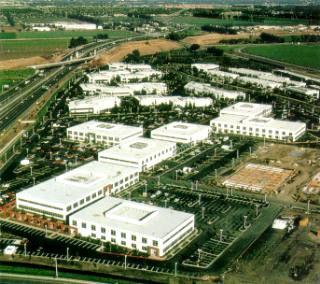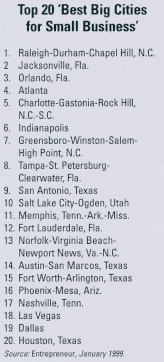 ”The rich,” F. Scott Fitzgerald wrote, “are not like you and me.”
”The rich,” F. Scott Fitzgerald wrote, “are not like you and me.”
Similarly, Fitzgerald might’ve added, fast-growth firms are not like you and me — or most of our businesses.
Very few of us can claim status as one of today’s fabled “gazelle” firms, who’ve become something like the business world’s Furbies. Everyone wants to be like the lovable little fellows. More specifically, everyone wants to grow like gazelles, with bounding business expansion rates of 20 percent or more, sustained over five-year-plus spans.
But when it comes to real estate, draconian decision-making dominates fast-growth small and medium-size enterprises (SMEs). Implemented in hothouse environments that breed hasty planning, gazelle real estate decisions are, in fact, often the loose-cannon kind likely to get you canned at a slow-growth, mature firm, says Steven Parshall, HOK senior vice president (www.hok.com/corporate).
“The culture of growth is often, ‘Who cares!’ Those in critical need are saying, ‘Just make it happen; violate the processes; commit without approval; move without authority; spend without funding,’ ” Parshall explains. “
Indeed, most fast-growth firms’ real estate strategies fall into the “fire-and-forget” mode. They’re rapidly executed, and results are rarely reviewed. (For a notable exception, see accompanying Bean Counters feature.)
BELOW: Not all fast-growth companies are young, high-tech fledglings. For example, 100-year-old GATX has created a high-growth subsidiary, GATX Logistics, which has become the largest U.S. public warehousing company by serving other firms’ growth needs. This Jacksonville, Fla., distribution center handles large appliance orders throughout Florida and Puerto Rico.

Real Estate Quandaries
That dichotomy leaves corporate real estate managers in a quandary: While gazelle-like growth may be corporate nirvana, fast-growth SMEs are usually the antithesis of conventional real estate wisdom. They place staggering demands on their real estate units and workplace environments. In fact, researchers have spotlighted some notably boneheaded real estate moves by fast-growth firms, including:
• A fast-growing bakery leased a new building with loading docks that were, alas, not the height of its delivery trucks; bread racks wouldn’t roll onto the trucks.
• A flourishing manufacturer leased a warehouse with loading doors 10 ft. (three m.) too short for its products.
Indeed, many fast-growth SMEs are so new to the real estate game that they misunderstand the most basic concerns, failing to realize, for example, that base rental rates may not include other significant expenses like interior fit-out and common area maintenance.
Says Parschall, “The most difficult challenge [at high-growth firms] is anticipating in advance what users often inexperienced in growth and change don’t know they’ll need. Corporate real estate must accelerate and decelerate the facility provisioning process on a non-cyclical, essentially random basis.”
Structuring real estate for optimal value is, ideally, a deliberative process. By nature, though, gazelles rarely allow for deliberation.
“When we asked fast-growth companies their single greatest challenge, we didn’t get the expected answer: speed. The greatest challenge was the unpredictability of the business environment, not knowing what to do,” says Stuart Pertz, managing director with New York City-based HLW Strategies, a planning, design and management service provider. “Flexibility and speed ranked No. 2 and No. 3.”
Given such challenges, it’s little wonder that high-growth SMEs don’t deeply ponder real estate decisions. Their once-in-several-lifetimes surges of growth automatically make real estate a striking asset under-performer. With core businesses growing by 20 percent-plus, they have little incentive for time-consuming deliberations about real estate, which, at best, offers an investment return of only 8 to 15 percent.
Instead, fast-growth SMEs’ real estate strategies are typified by “incrementalism,” says Martha O’Mara, former Harvard Graduate School of Design professor and a Corporate Real Estate Portfolio Alliance adviser. “With incrementalism, the company obtains only
BELOW: Intel is one fast-growth company that’s matured with its expansion-boosting real estate strategies intact. It’s able to build its massive, billion-dollar “fabs,” like this one in Santa Ana, Calif., in half the time normally required.
 IDRC Tackles Fast-Growth Strategies
IDRC Tackles Fast-Growth Strategies
Ironically, though gazelles regularly disregard real estate’s best practices, the extreme challenges they face have prompted some of the industry’s best minds to study their coping strategies. The world’s preeminent corporate real estate association, the International Development Research Council (IDRC) has released the research, Infrastructure Delivery for Fast-Growth Companies. (Site Selection is IDRC’s official publication.)
Drawing on last year’s IDRC Executive Management Symposium at Harvard’s Graduate School of Design, IDRC’s research report is arguably the best codification of rapid-growth real estate strategies (see accompanying box for more information), convening a host of the industry’s most articulate thinkers (including O’Mara, Parshall and Pertz).
Perhaps more than anything else, fast-growth firms demand what Parshall calls “the telepathic corporate real estate executive. The yearly business plan is but a stake in the ground. Quarterly changes may fundamentally alter the business intent for that year. Contingency planning is not just a good idea; it’s the mainstay of the fast-growth company’s activities, [which causes] corporate real estate executives to live in both the tactical and strategic worlds.”
Life in the Gazelle Lane
Other recent studies of fast-growth SMEs boldface the need for real estate telepathy. Their unforgiving business pace creates real estate havoc:
 • Rapid geographic expansion: Even with formidable global economic uncertainties, 36 percent of the fast-growth U.S. SMEs that PricewaterhouseCoopers (PWC at www.pwc.com) studied in late 1998 said they planned to geographically expand their operations during 1999, only a 3 percent dip from PWC’s 1997 study. “What they may lack in optimism, they make up for in courage,” says James Atwell, PWC global private equity leader. “
• Rapid geographic expansion: Even with formidable global economic uncertainties, 36 percent of the fast-growth U.S. SMEs that PricewaterhouseCoopers (PWC at www.pwc.com) studied in late 1998 said they planned to geographically expand their operations during 1999, only a 3 percent dip from PWC’s 1997 study. “What they may lack in optimism, they make up for in courage,” says James Atwell, PWC global private equity leader. “
• Fast-track product and service launches: Among the UK-based “hyper-growth companies” PWC recently studied, 85 percent reported launching “one or more products or services” each year, a rate 40 percent higher than the “middle market firms” studied.
• Shrinking lead times for developing products and services: The benchmark lead time among UK-based hyper-growth companies, PWC found, was a mere 7.2 months, some 40 percent shorter than the middle-market norm.
Clearly, such warp-speed demands disconnect fast-growth SMEs’ real estate from the 14-month span that industry analysts say is required to turn around a new facility.
Solutions: Design/Build, JIT Space
Such intense time pressures also explain why fast-growth firms often make bad real estate decisions — including no decisions.
The latter trap waylaid LCD manufacturer Three-Five Systems (www.threefive.com). With a 10-fold revenue increase in only two years, the Tempe, Ariz.-based firm in 1996 was one busy company in high cotton.
With 85 percent of sales coming from Motorola, it was too busy, it turned out. In 1996, Motorola altered its product line, decimating Three-Five’s revenues by 34 percent and spurring pricey inventory write-offs.
Three-Five has since rallied strongly, in 1998 matching the revenue level of its Motorola-driven salad days and opening a new facility in China. But such a blow would’ve been fatal for many firms. Management wanted to diversify, but not finding the time to grow almost killed growth. “We couldn’t build out our infrastructure quickly enough to move beyond Motorola,” says Three-Five President and CEO David Buchanan.
The IDRC report offers several ways in which fast-growth firms are accelerating getting the necessary real estate infrastructure online:
• Merging design and construction processes in what Paul Westlake, principal at Cleveland-based Dijk Pace Westlake Architects, calls “design/build, [which also] transfers the development risk from the owner to a design/builder. Time has become a bigger factor than cost . . . and the delivery approach is influenced by the need to compress time.
“There’s a need for services to be integrated into very comprehensive provider packages, definitely trending away from the ‘a la carte’ approach of earlier years.”
• Creating what Parshall calls “just-in-time space,” some of which can be rapidly converted to corporate use when a new project or client suddenly creates a pressing need. JIT strategies include opening satellite offices in less-expensive locations; “planting” company employees in customers’ space (often under the guise of customer service); and giving workers incentives to work virtually, not only telecommuting from home, but also working in non-traditional locations like autos and hotels.
BELOW: Brainpower, teamwork and non-traditional work settings are often major factors in the success of fast-growing companies. This interdisciplinary team is working in employee break space at Siemens Corporate Research facility in Princeton, N.J.

Mapinfo: A Typical Changeling
Despite IDRC’s laudable efforts to map out fast-growth real estate strategies, few businesses truly understand the business pressures on gazelles, who’re often trying to decide what they want to be when they grow up.
Consider Troy, N.Y.-based Mapinfo (www.mapinfo.com), which produced the world’s first desktop-based mapping software, now used in many corporate location searches. When the company was founded in 1986 by four Rensselaer Polytechnic Institute students with US$10,000, however, its focus was far different: developing sensors to pinpoint onscreen the position of sensor-equipped autos. The idea stalled, so the founding quartet asked geography-focused potential clients (e.g., government arms, banks, police departments) what they wanted. What they wanted was to plot database demographics on maps.
Were the customers ever right. By 1992, Mapinfo was No. 23 on the Inc. 500 (www.inc.com/500/). Today, it has a market capitalization of almost $85 million, strategic alliances with the likes of Microsoft and Oracle, and facilities throughout North America, Europe and the Asia-Pacific that serve 58 countries.
Few firms are ever in such pivotal, who-are-we? stages, which foster the cautious real estate incrementalism that characterizes fast-growth SMEs. Founded in 1991, Web wunderkind Netscape, for instance, only bought its first facility in 1995. (And, in a stark reminder of how frail gazelle status can be, Mountain View, Calif.-based Netscape is now facing a 20 percent work-force downsizing in the wake of its acquisition by America Online.)
Usually working with limited resources, fast-growth SMEs walk a tightrope in wisely wedding real estate demands with capital supply. Either under- or over-reaching can be fatal. In many ways, gazelle real estate units must build a bridge while the company walks over it.
Gazelle Geography
Finding the best location in which to grow a gazelle is another huge question, and a virtually unanswerable one. More than anything else, where gazelles spring to life seems largely an accident of geography — namely, the areas happen to be home to the individuals whose ideas jump-start hypergrowth.
To be sure, certain indicators help. Entrepreneur magazine, for example, recently ranked “The Best Cities for Small Business” (see accompanying chart), with the respective top five slots held down by Raleigh-Durham-Chapel Hill, N.C.; Jacksonville, Fla.; Orlando, Fla.; Atlanta and Charlotte-Gastonia-Rock Hill, N.C.-S.C.
Given the boundary-less nature of ideas, however, gazelle locations often defy conventional wisdom. The Inc. 500, for example, includes such out-of-the-way locales as Evanston, Wyo. (home of disk-drive and keyboard manufacturer Ehman, ranked No. 13 and one of nine Wyoming firms in the Inc. 500), and Newport, R.I., (home of software manufacturer Early Cloud, No. 28 and one of 43 Rhode Island firms on the list).
Some growing firms, however, leave their birthplaces behind, often driven by cost factors. Royal Insurance’s headquarters relocation from New York City to Charlotte, N.C., for example, “cut headcount from 2,300 to 1,100, and increased productivity from 60 percent to 85 percent,” says Benjamin Rook, chairman and CEO of Odell Associates, a Charlotte-based planning, architecture and engineering firm.
More common is the expansion pattern now unfolding for New York City-based Total Network Solutions (TNS at www.tns-inc.com), a hot, three-year-old network computing consultancy termed “the prototype of a fast-track, high-tech company” by Morgan Stanley Venture Partners (which recently invested $10 million in TNS). While maintaining its New York headquarters, TNS is setting up new facilities in Boston; Mahwah, N.J.; and Philadelphia in what Vice President Peggy Walker calls “just the beginning” of TNS’s regionally based expansions.
Life Cycles and Strategy: Where Do You Fit?
| promote management efficiency and control [of] expenditures.”
|
|---|
Defeating the Labor Dearth
However unconventional their strategies, gazelles regularly beat the tight labor markets stalling many corporate expansion plans. Much of that success seems to stem from gazelles’ uncommon singleness of purpose, a trait reinforced by substantial investments in human capital.
For example, there’s Merrimack, N.H.-based PC Connections (www.pc-connections.com). Despite rapid growth, including 1998’s 31.8 percent sales surge, the computer mail-order firm has defied its industry’s turnover epidemic.
Rapid growth, though, could’ve created major problems in 1992, when PC Connections wanted to move its distribution center to Wilmington, Ohio, an Airborne Express hub. Though still a relative fledgling, the company convinced all 12 of its distribution managers to relocate to Ohio. Similarly, PC Connections has a 96 percent employee retention rate, astronomical in even the lowest-tech industry.
That uncommon loyalty undoubtedly has a lot to do with the “employees are customers, too” ethos championed by CEO Patricia Gallup, one Ernst & Young’s 1998 “Entrepreneurs of the Year” (www.ey.com/industry), who founded the company in 1982 in rural New Hampshire with $8,000 of her own funds. PC Connections’ generous employee benefits include 26-week pregnancy leaves and paid child care for workers away on company business.
Edina-Minn.-based Spine-Tech, which makes high-tech spinal implants, further underscores gazelles’ substantial human capital investments.
With enough savings to give his idea a full year’s shot, David Stassen founded Spine-Tech in 1991, taking a 60 percent pay cut from his previous job (at a venture-capital company, no less) to log 100-hour weeks. Despite Spine-Tech’s hectic, rapid expansion, Stassen’s key employee group loyally stuck together. With good reason: By 1998, 25 employees had become millionaires via a stock ownership program and generous performance bonuses.
Start with Strategy
For most companies, gazelle-dom will remain but a fond dream. But fast-growth SMEs do offer insights into how to perhaps defy the traditional “S-curve” business arc, creating what corporate guru Charles Handy calls “the second growth curve.”
At the same time, though, all evidence suggests that most true gazelles by necessity employ real estate strategies that are not in their best long-term interests.
Cautions Pertz, “When you build something, you constrain the way people operate. Businesses respond to the environment created for them. The process by which you make decisions about a facility, [including] aesthetic, design and business choices, has a much deeper impact than you might think.”
On the other hand, O’Mara in the IDRC research report offers an advisory counterpoint on how to handle real estate in fast-changing environments, one that rings equally true for non-gazelles:
“Always think about your business strategies first; then think about your organizational management,” she counsels. “Last, worry about your real estate.”
SS
